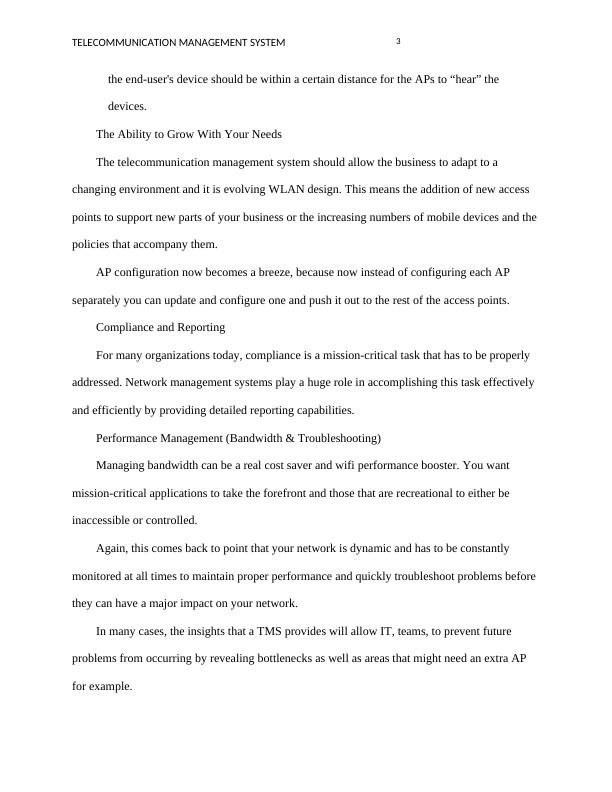Telecommunication Management System (TMS)
Research and evaluate network management architectures in common carrier and extended models for telecommunications management networks.
10 Pages2341 Words73 Views
Added on 2023-06-11
About This Document
Telecommunication management system is the framework of policies, processes, and procedures used by a telecommunication organization to ensure that it can fulfill all the tasks required to achieve its objectives. This article discusses the features, configuration, and functions of TMS, procedures for fault management and accountability, network management techniques, disaster recovery plan, and the impact of the workplace and industry environment on the use of TMS.
Telecommunication Management System (TMS)
Research and evaluate network management architectures in common carrier and extended models for telecommunications management networks.
Added on 2023-06-11
ShareRelated Documents
End of preview
Want to access all the pages? Upload your documents or become a member.
Telecommunications Management Network: Features and Functions
|11
|2598
|441
Report on Security for Wireless Network
|6
|757
|115
COIT 11238 | Networked Infrastructure Foundations
|14
|1891
|262
SEO Suggestions for Desklib - Online Library for Study Material
|14
|2321
|254
COIT11238 - Networked Infrastructure Foundations
|15
|3502
|93
(PDF) Comparison of Wi-Fi IEEE 802.11 Standards
|26
|7309
|66



